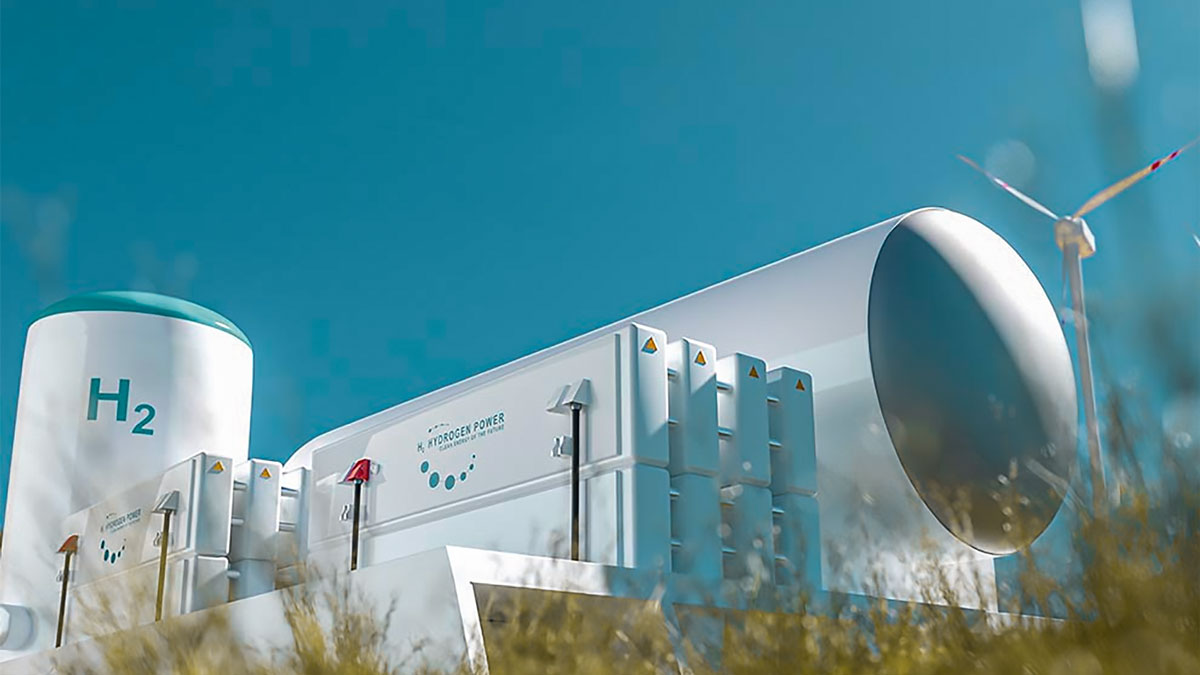Hydrogen Shot Positioning America in the Clean Energy Market
The Hydrogen Shot establishes a framework and foundation for clean hydrogen deployment in the American Jobs Plan, which includes support for demonstration projects. Industries are beginning to implement clean hydrogen to reduce emissions, yet many hurdles remain to deploying it at scale. Currently, hydrogen from renewable energy costs about $5 per kilogram. Achieving the Hydrogen Shot’s 80% cost reduction goal can unlock new markets for hydrogen, including steel manufacturing, clean ammonia, energy storage, and heavy-duty trucks. This would create more clean energy jobs, reduce greenhouse gas emissions, and position America to compete in the clean energy market on a global scale. These efforts would ensure that environmental protection and benefits for local communities are a priority.
The U.S. Department of Energy’s (DOE’s) Energy Earthshots Initiative aims to accelerate breakthroughs of more abundant, affordable, and reliable clean energy solutions within the decade.
Achieving the Energy Earthshots will help America tackle the toughest remaining barriers to addressing the climate crisis, and more quickly reach the Biden–Harris Administration’s goal of net-zero carbon emissions by 2050 while creating good-paying union jobs and growing the economy.
The first Energy Earthshot, launched June 7, 2021 – Hydrogen Shot – seeks to reduce the cost of clean hydrogen by 80% to $1 per 1 kilogram in 1 decade (‘1 1 1’).
If the Hydrogen Shot goals are achieved, scenarios show the opportunity for at least a 5-fold increase in clean hydrogen use. A U.S. industry estimate shows the potential for 16% carbon dioxide emission reduction by 2050 as well as $140 billion in revenues and 700,000 jobs by 2030.
Hydrogen Shot would catalyze innovation in any hydrogen pathway with potential for meeting the targets – such as renewables, nuclear, and thermal conversion – providing incentives to diverse regions across the country.
The U.S. Department of Energy Hydrogen Program, led by the Hydrogen and Fuel Cell Technologies Office within the Office of Energy Efficiency and Renewable Energy, conducts research and development in hydrogen production, delivery, infrastructure, storage, fuel cells, and multiple end uses across transportation, industrial, and stationary power applications. The program also includes activities in technology validation, manufacturing, analysis, systems development and integration, safety, codes and standards, education, and workforce development.
As part of the launch, at DOE’s Hydrogen Program Annual Merit Review, DOE’s Hydrogen Program issued a Request for Information (RFI) on viable hydrogen demonstrations, including specific locations, that can help lower the cost of hydrogen, reduce carbon emissions and local air pollution, create good-paying jobs, and provide benefits to disadvantaged communities.
DOE activities in hydrogen include several offices and a total of approximately $400 million in the President’s Fiscal Year (FY) 2022 Budget Request. This compares to approximately $285 million related to hydrogen in FY 2021. Pending appropriations, DOE anticipates funding opportunities and other activities to help advance progress toward meeting Hydrogen Shot goals.
Recently, Southern California Gas (SoCalGas) made public several of its research and development initiatives designed to enable low-cost, clean hydrogen have been submitted to the U.S. Department of Energy’s (DOE) Earthshot Hydrogen Program’s Request for Information (RFI). The submissions are intended to help DOE’s Hydrogen Program prioritize projects that would accelerate clean hydrogen innovations that could reduce emissions, create jobs, and facilitate a net-zero carbon emissions economy by 2050. SoCalGas is working with multiple collaborators on these initiatives, including the University of California Irvine, University of California Los Angeles, and the Green Hydrogen Coalition, among others.
“Green hydrogen is a renewable energy source that can be ready-to-go whenever it’s needed for power generation, manufacturing, or transportation,” said Maryam Brown, SoCalGas President. “We believe this flexible, storable fuel will be essential to achieving net-zero emissions in California, and that is why we are working collaboratively with these partners to advance these important hydrogen projects.”
SoCalGas recently announced its commitment to the goal of achieving net zero greenhouse gas emissions in its operations and delivery of energy by 2045. In doing so, SoCalGas became the largest gas distribution utility in the nation to include scopes 1, 2, and 3 emissions in its target, aligning with the Paris Agreement’s recommendations to limit global warming to 1.5°C by achieving net zero by mid-century.
The programs submitted to the DOE request include:
- HyDeal LA: An initiative to architect the green hydrogen ecosystem to achieve at-scale procurement of green hydrogen at $1.50/kg in the Los Angeles basin by 2030. HyDeal LA is a collaboration of green hydrogen offtakers, developers, integrators, equipment manufacturers, investors, environmental groups, and other advisors coalescing to overcome the biggest barrier to the green hydrogen economy–its high cost–by aiming to launch North America’s first green hydrogen hub at scale. HyDeal LA is targeting the inclusion of power plants, industrial applications, hydrogen transportation, and ultimately, global export of green hydrogen from the ports.
- Renewable Hydrogen Ecosystem: A project at the University of California, Irvine (UCI) that will be designed to use hydrogen made from solar and wind energy to create a zero-emissions energy system on the UCI campus. If successful, this project would demonstrate a scalable solution that could be replicated by urban communities around the world to achieve zero emissions.
- Direct Solar Methane Conversion: A new technology developed by researchers at the University of California Los Angeles (UCLA) that uses solar energy to separate the carbon and hydrogen atoms in natural gas with zero or negative emissions, creating hydrogen and capturing carbon in solid form, which can be used in high value energy technology applications when commercialized.
“The Western United States has abundant renewable resources necessary to make globally-competitive low-cost green hydrogen,” said Janice Lin, President and Founder of the Green Hydrogen Coalition. “By working to simultaneously aggregate multi-sectoral demand, scale production, and design the needed infrastructure for transport and storage, HyDeal LA aims to make use of these renewable resources to produce and deliver green hydrogen at scale to accelerate multi-sectoral decarbonization in power plants, transportation, and as a feedstock for industrial customers. HyDeal LA represents an opportunity for the U.S. Department of Energy to promote the development of domestic green hydrogen hubs and establish the U.S. as a leader for this vast new emerging energy export opportunity.”
“By using solar energy converted to hydrogen, we aim to create a 100% zero-carbon energy system on the UC Irvine campus,” said Jack Brouwer, director of UCI’s National Fuel Cell Research Center as well as its Advanced Power and Energy Program. “When deployed, the system we’re proposing could be replicable at other universities, industrial campuses, large apartment complexes, military bases, and other multi–megawatt microgrids across the nation.”
“The new clean hydrogen production technology developed by UCLA researchers represents a disruptive breakthrough,” said Tim Fisher, Professor and Chair of UCLA’s Mechanical and Aerospace Engineering department. “When commercialized, this technology could drive the U.S. as a leader in zero carbon technology development, domestic jobs growth, and the production of clean hydrogen at very low-cost.”
In its RFI, the DOE notes that hydrogen “enables innovations in energy production and end uses that can help decarbonize some of the most emissions-intensive sectors of our economy: transportation, electricity generation, and industrial applications, including chemicals production. Additional decarbonization opportunities exist for low-carbon hydrogen such as for combined heat and power (CHP) in building applications and through blending with natural gas.”







